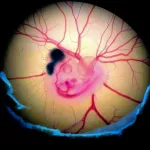(Press-News.org) Northern elephant seals may hold the key to unlocking the secrets of the open ocean’s twilight zone (~200 – 1,000 meters deep). According to a new study, these deep-diving creatures can help estimate fish abundance by providing a rare window into the elusive prey dynamics in one of the planet’s most mysterious and remote ecosystems. Ecosystems are dynamic, with resource fluctuations – natural or human-induced – shaping species interactions and food webs. These processes are well studied in terrestrial ecosystems but not in deep, open ocean ecosystems, which hold the majority of global fish biomass. It is unclear whether deep-sea populations undergo cascading fluctuations like those seen on land. Monitoring this region is hindered by technological constraints, as data collection is costly, sporadic, and surface-focused. Wildlife have long been recognized as vital sentinels of ecosystem health, however, offering insights into human impacts and environmental changes that are otherwise challenging to quantify. However, no dedicated deep-ocean sentinel species exists. Here, Roxanne Beltran and colleagues evaluated whether northern elephant seals (Mirounga angustirostris) could be used as ecosystem sentinels to monitor the health of the northeast Pacific Ocean twilight zone. Elephant seals primarily feed on twilight zone fish across large areas of the open ocean. Using data from satellite-tagged seals, Beltran et al. discovered a strong correlation between seal foraging success and long-term oceanographic conditions measured at the ocean’s surface. Notably, fluctuations in seal mass gain corresponded with changes in these conditions observed two years earlier, suggesting they serve as valuable proxies for prey availability in the twilight zone. This connection enabled the hindcasting of prey abundance over the past 45 years and forecasting two years into the future, highlighting distinct periods of high and low fish populations. The findings suggest that prey populations in the twilight zone experience rapid fluctuations, with cycles of abundance and scarcity occurring every three to five years – patterns otherwise impossible to measure through direct observation.
END
Elephant seals in the Pacific serve as deep-ocean sentinels, revealing patterns otherwise hard to measure
Summary author: Walter Beckwith
2025-02-13
ELSE PRESS RELEASES FROM THIS DATE:
Depression linked with higher risk of long-term physical health conditions
2025-02-13
Adults with a history of depression gain long-term physical conditions around 30% faster than those without, according to research publishing February 13th in the open-access journal PLOS Medicine. Kelly Fleetwood of the University of Edinburgh, United Kingdom, and colleagues argue that their study suggests depression should be viewed as a ‘whole body’ condition, and integrated approaches should be used to manage mental and physical health.
Depression is the most common mental health condition and ...
Los Angeles groundwater remained depleted after 2023 deluge, study finds
2025-02-13
The greater Los Angeles area has long been subject of intense seismographic monitoring. A network of highly sensitive seismometers peppers the region on a constant vigil for earthquakes. Now researchers at the Stanford Doerr School of Sustainability have developed a new way to use that existing infrastructure and its decades of data to estimate water levels in the region’s aquifers, which serve some 10 million residents of Los Angeles and Orange counties.
The researchers analyzed the ...
Foraging seals enable scientists to measure fish abundance across the vast Pacific Ocean
2025-02-13
EMBARGOED until Thursday, Feb.13, 2025, at 2 P.M. U.S. Eastern Time
SANTA CRUZ, Calif. – Over the past 60 years, marine biologists at UC Santa Cruz have monitored the behavior of northern elephant seals that journey to nearby Año Nuevo Natural Reserve. With the seals gathering on the beach by the thousands to breed and molt, generations of researchers have been able to amass more than 350,000 observations on over 50,000 seals.
With the help of powerful technologies and the intrepidness to get close ...
Dessert stomach emerges in the brain
2025-02-13
To find the cause of the "dessert stomach", the researchers investigated the reaction of mice to sugar and found that completely satiated mice still ate desserts. Investigations of the brain showed that a group of nerve cells, the so-called POMC neurones, are responsible for this. These neurones become active as soon as the mice were given access to sugar which facilitated their appetite.
When mice are full and eat sugar, these nerve cells not only release signaling molecues that stimulate satiety, but also one of the body's own opiate: ß-endorphin. This acts on other nerve cells with opiate receptors and triggers a feeling of reward, ...
Fungus ‘hacks’ natural immune system causing neurodegeneration in fruit flies
2025-02-13
A fungal infection has been shown to trigger a fruit fly’s own immune system to destroy brain cells leading to signs of neurodegeneration, a new study has found.
The paper published in PLOS Biology today found that a fungus called Beauveria bassiana was able to make the fly’s innate immune system trigger a process that kills neurons and glia in the brain, leading to more than half of flies dying after seven days compared to half of control samples living for nearly 50 days.
In experiments conducted by a team of academics from the University of ...
A new view on 300 million years of brain evolution
2025-02-13
Leuven, 14 February 2025 – In a new study published in Science, a Belgian research team explores how genetic switches controlling gene activity define brain cell types across species. They trained deep learning models on human, mouse, and chicken brain data and found that while some cell types are highly conserved between birds and mammals after millions of years of evolution, others have evolved differently. The findings not only shed new light on brain evolution; they also provide powerful tools for studying how gene regulation shapes different cell types, across species or different disease states.
Our brain, and by extension ...
Birds have developed complex brains independently from mammals
2025-02-13
The pallium is the brain region where the neocortex forms in mammals, the part responsible for cognitive and complex functions that most distinguishes humans from other species. The pallium has traditionally been considered a comparable structure among mammals, birds, and reptiles, varying only in complexity levels. It was assumed that this region housed similar neuronal types, with equivalent circuits for sensory and cognitive processing. Previous studies had identified the presence of shared excitatory and inhibitory neurons, as well as general connectivity patterns suggesting a similar evolutionary path in these ...
Protected habitats aren’t enough to save endangered mammals, MSU researchers find
2025-02-13
Images
EAST LANSING, Mich. – Tropical forests are massive biodiversity storehouses. While these rich swathes of land constitute less than one-tenth of Earth’s surface, they harbor more than 60% of known species. Among them is a higher concentration of endangered species than anywhere else on Earth.
However, these regions are also under immense pressure, as tropical land is rapidly being transformed for industrial and agricultural purposes.
Worldwide, regional governments and international groups are establishing new protected areas to slow further loss of threatened species. However, new research appearing in the journal PLOS Biology demonstrates ...
Scientists find new biomarker that predicts cancer aggressiveness
2025-02-13
HOUSTON ― Using a new technology and computational method, researchers from Fred Hutch Cancer Center and The University of Texas MD Anderson Cancer Center have uncovered a biomarker capable of accurately predicting outcomes in meningioma brain tumors and breast cancers.
In the study, published today in Science, the researchers discovered that the amount of a specific enzyme, RNA Polymerase II (RNAPII), found on histone genes was associated with tumor aggressiveness and recurrence. Hyper-elevated levels of RNAPII on these histone genes indicate cancer over-proliferation and potentially contribute to chromosomal changes. These findings point to the use of a new genomic technology as ...
UC Irvine astronomers gauge livability of exoplanets orbiting white dwarf stars
2025-02-13
Irvine, Calif., Feb. 13, 2025 — Among the roughly 10 billion white dwarf stars in the Milky Way galaxy, a greater number than previously expected could provide a stellar environment hospitable to life-supporting exoplanets, according to astronomers at the University of California, Irvine.
In a paper published recently in The Astrophysical Journal, a research team led by Aomawa Shields, UC Irvine associate professor of physics and astronomy, share the results of a study comparing the climates of exoplanets at two different stars. One is a hypothetical white dwarf that’s passed through much of its life cycle and is on a slow path ...
LAST 30 PRESS RELEASES:
Making lighter work of calculating fluid and heat flow
Normalizing blood sugar can halve heart attack risk
Lowering blood sugar cuts heart attack risk in people with prediabetes
Study links genetic variants to risk of blinding eye disease in premature infants
Non-opioid ‘pain sponge’ therapy halts cartilage degeneration and relieves chronic pain
AI can pick up cultural values by mimicking how kids learn
China’s ecological redlines offer fast track to 30 x 30 global conservation goal
Invisible indoor threats: emerging household contaminants and their growing risks to human health
Adding antibody treatment to chemo boosts outcomes for children with rare cancer
Germline pathogenic variants among women without a history of breast cancer
Tanning beds triple melanoma risk, potentially causing broad DNA damage
Unique bond identified as key to viral infection speed
Indoor tanning makes youthful skin much older on a genetic level
Mouse model sheds new light on the causes and potential solutions to human GI problems linked to muscular dystrophy
The Journal of Nuclear Medicine ahead-of-print tip sheet: December 12, 2025
Smarter tools for peering into the microscopic world
Applications open for funding to conduct research in the Kinsey Institute archives
Global measure underestimates the severity of food insecurity
Child survivors of critical illness are missing out on timely follow up care
Risk-based vs annual breast cancer screening / the WISDOM randomized clinical trial
University of Toronto launches Electric Vehicle Innovation Ontario to accelerate advanced EV technologies and build Canada’s innovation advantage
Early relapse predicts poor outcomes in aggressive blood cancer
American College of Lifestyle Medicine applauds two CMS models aligned with lifestyle medicine practice and reimbursement
Clinical trial finds cannabis use not a barrier to quitting nicotine vaping
Supplemental nutrition assistance program policies and food insecurity
Switching immune cells to “night mode” could limit damage after a heart attack, study suggests
URI-based Global RIghts Project report spotlights continued troubling trends in worldwide inhumane treatment
Neutrophils are less aggressive at night, explaining why nighttime heart attacks cause less damage than daytime events
Menopausal hormone therapy may not pose breast cancer risk for women with BRCA mutations
Mobile health tool may improve quality of life for adolescent and young adult breast cancer survivors
[Press-News.org] Elephant seals in the Pacific serve as deep-ocean sentinels, revealing patterns otherwise hard to measureSummary author: Walter Beckwith



